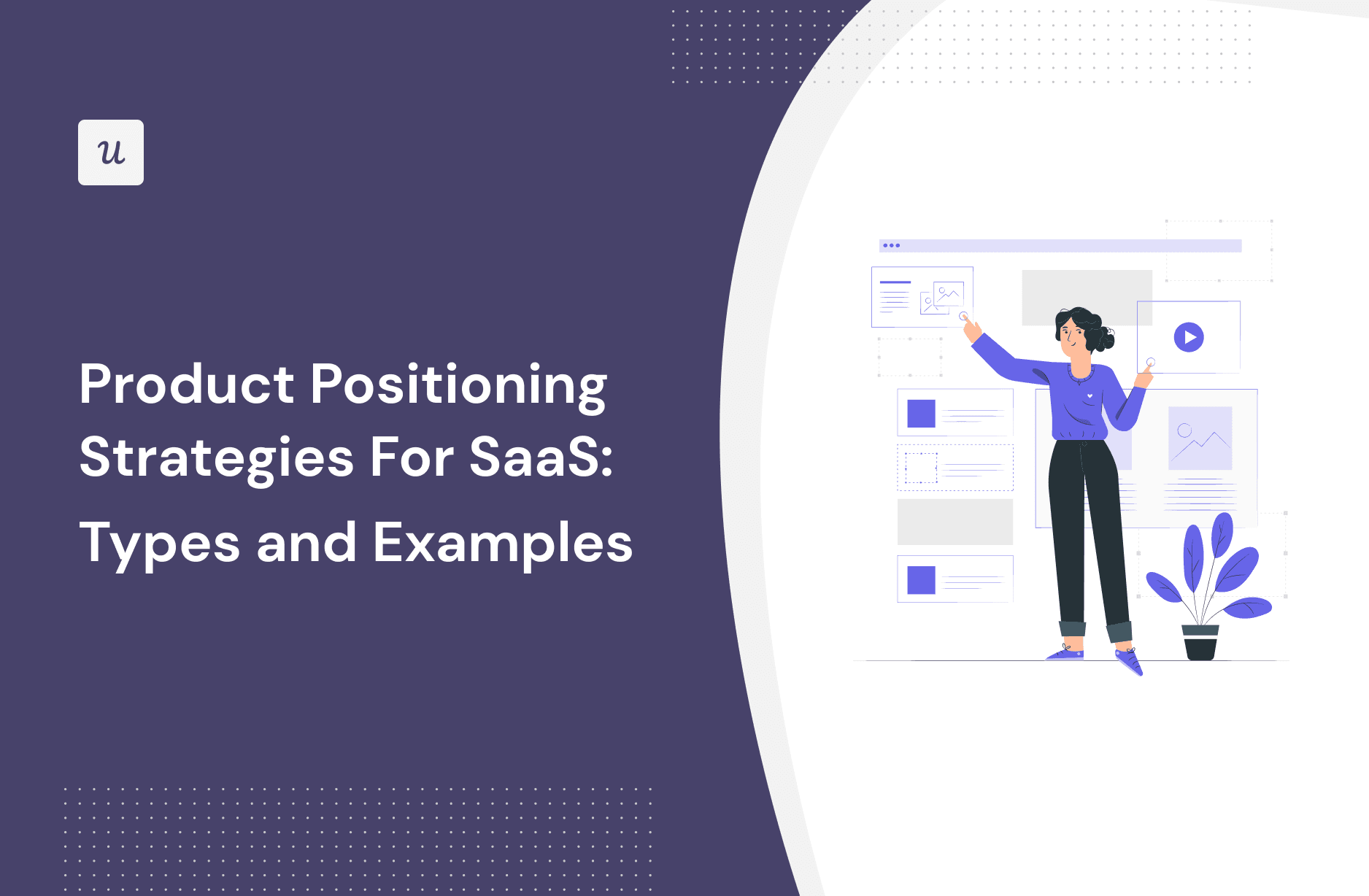
Try Userpilot Now
See Why 1,000+ Teams Choose Userpilot

What is product positioning?
Product positioning is a strategy that defines where and how your product stands in the market in order to bring more customers and improve your brand’s reputation. It shapes how customers perceive your product, focusing on its unique features and benefits to differentiate it from competitors.
Why are product positioning strategies important?
Product positioning strategies play a crucial role in not just attracting customers, but in building a loyal user base for your SaaS product. And for many reasons:
- They help set your product apart from competitors, promoting unique ideas or frameworks that differ from even bigger players in the market.
- Effective positioning ensures your product aligns with the needs and preferences of your target audience. This helps cultivate deeper engagement as they resonate more with the product.
- A well-positioned brand can help customers make informed purchasing choices. This is by clearly communicating the value of their product and reviewing its alternatives using its authority.
Types of product positioning strategies
Product positioning can take many forms, each with its unique approach to connecting with the target audience.
That said, each of these strategies offers a distinct way to position your product in a way that caters to your customer’s needs and preferences:
Characteristics-based positioning
This approach emphasizes the unique features of your product. It’s all about creating a strong association in the customers’ minds between your product and its ease of use, efficiency, unique features, or innovation. And the goal is to position your product as the go-to solution for customers seeking those specific features.
So if your product specializes in cloud-based development tools. You could use characteristics-based positioning by highlighting the platform’s unique feature of real-time collaborative coding, setting you apart from competitors who offer traditional, isolated coding environments.
Pricing-based positioning
Pricing-based positioning focuses on offering your product at a competitive price point. This strategy works well for attracting budget-conscious customers or entering markets with cost as a key decision factor. The idea is to provide a high-quality product at a price that undercuts competitors and still offers great value to your target customers.
For instance, you could adopt a pricing-based positioning strategy by offering a full suite of tools at a price significantly lower than the market average, appealing to cost-conscious small business owners.
Use or application-based positioning
Use or application-based positioning involves associating your product with specific use cases or jobs-to-be-done. It works by demonstrating how your product fits perfectly into your ideal customer’s work routine and makes their life easier.
For example, let’s say your product is a healthcare management platform. You could position it by focusing on managing patient records efficiently, thus targeting healthcare providers who need streamlined patient management solutions.
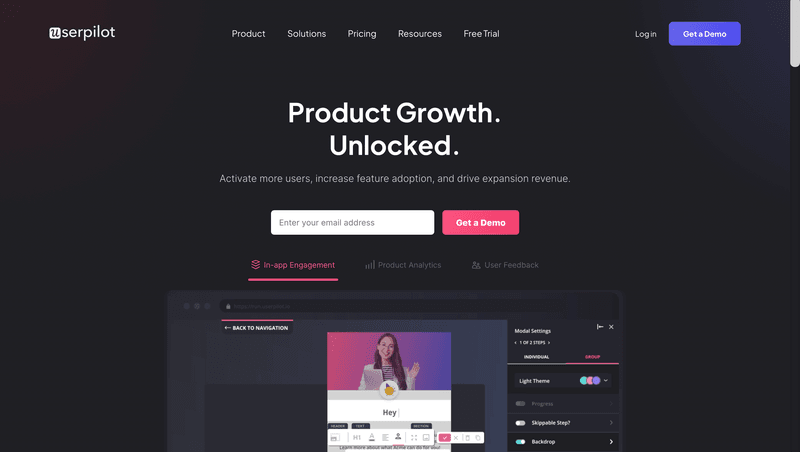
Quality or prestige-based positioning
Quality or prestige-based positioning targets a more exclusive customer base. It works by positioning your product as a symbol of high quality, exclusivity, or luxury.
To pull it off, you need to make your product exclusive and desirable to those who value premium experiences and are willing to pay more for superior quality. This can involve high-end branding, high-touch service, and an emphasis on the superior aspects of the product.
For instance, if your product offers high-end cybersecurity services for large corporations. A quality-based positioning strategy could emphasize exceptional security features and bespoke services, catering exclusively to top-tier clients.
Competitor-based positioning
With competitor-based positioning, you focus on how your product outperforms or offers more than the competition.
It can involve making comparisons that highlight your product’s advantages over others in the market—either in terms of functionality, additional features, proactive customer support, or overall value.
For example, if your product is a video streaming platform for businesses, you could use competitor-based positioning by emphasizing its superior streaming quality and uptime compared to your competitors.
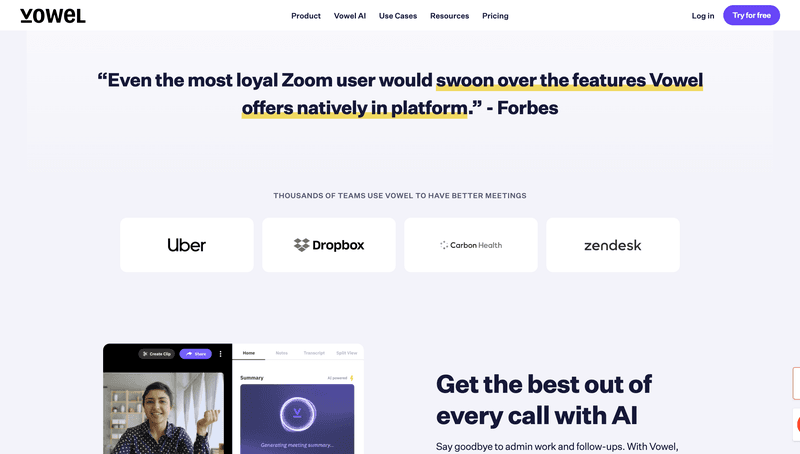
How to create a product positioning strategy?
Now, let’s go over each step to create a well-thought product positioning strategy for your SaaS business:
Identify your target market
First, define who your target customer is.
Creating a detailed customer persona involves understanding their demographics, behaviors, preferences, and pain points. This persona will help you identify specific needs and challenges so you can tailor your product development and marketing strategy according to them.
Moreover, you can also analyze the competition for your target market. This will help you identify gaps in the market and position your product to capitalize on these opportunities.
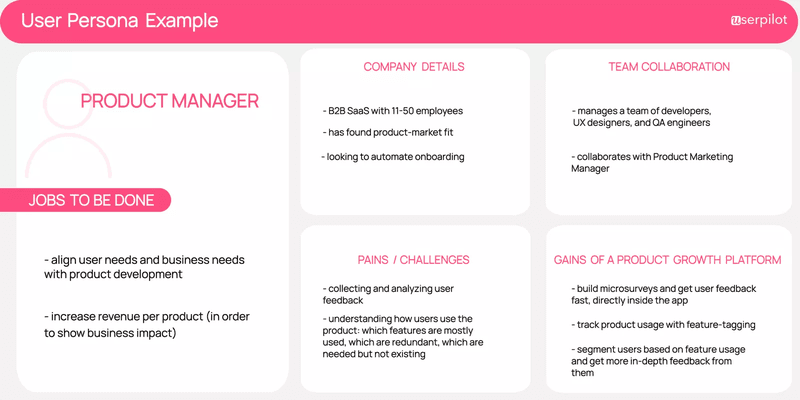
Conduct market research
Now, dig deeper into the research.
To find positioning opportunities, leverage surveys and interviews to gather valuable data directly from your current customers—as these will give you a clearer understanding of their preferences and expectations.
The same applies to market trends and competitor analysis, as they will help you understand how competitors position their products and identify areas where your product can stand out—while making sure you’re into up-to-date information.
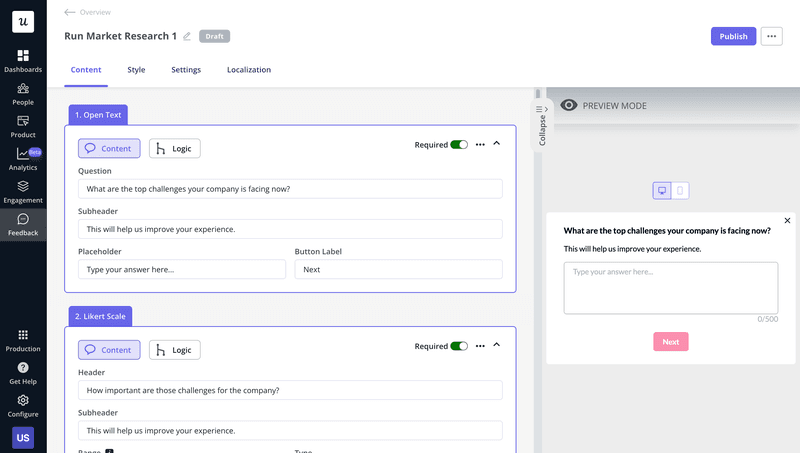
Define your product’s unique selling point (USP)
Your unique selling point (or unique value proposition) is central to your positioning.
Ask yourself:
- What’s your market position?
- What makes your product different and better than the competition?
- What are the unique features, benefits, or experiences your product offers that are not available elsewhere?
- How does your audience perceive your product?
- What are the aspects of your product that are more likely to influence purchase decisions?
Your USP should be compelling and directly address the needs and wants of your target market. It should combine your solution, your target audience, and the pain points/needs/JTBDs that you’re trying to address.
Create a clear product positioning statement
Next, craft a clear brand positioning statement that you can promote. This statement should include who your target audience is, the unique value your product offers, how it stands apart from competitors, and the key benefits it delivers.
For example, “Mailchimp empowers small businesses with an all-in-one marketing platform, offering innovative technology, award-winning support, and inspiring content.”
This statement will guide all your marketing efforts and ensure consistency across different channels. A well-crafted positioning statement should make anyone instantly grasp what your product is about and why it’s relevant to its users.
Test your product positioning and refine
So, testing your product positioning in the market is essential. It doesn’t matter how well-educated and elaborated your positioning strategy is if it doesn’t work.
For this, use customer feedback and key performance metrics, like customer satisfaction and market share to evaluate the effectiveness of your positioning. This data will provide insights into what’s working and what needs adjustment.
With feedback analysis, you can regularly refine your brand positioning to adapt to market trends, shifts in customer preferences, and new strategies from competitors.
This approach will provide enough agility to your company to ensure that your product remains relevant and continues to resonate with your target audience over time.
Examples of good product positioning
It can be complicated to put product positioning theory into practice.
For that reason, let’s see some real-world examples of SaaS companies that have excelled in positioning their products effectively:
Userpilot
Userpilot targets medium and enterprise companies, so we tailor all marketing materials to product teams rather than startups or SaaS founders (ensuring that our messaging resonates strongly with product managers or customer success reps).
As for our pricing positioning, Userpilot maintains a no-discounts policy and offers only annual pricing for Growth & Enterprise plans. This approach positions Userpilot as a premium solution, making the product less accessible to small businesses but perfectly suited for the mid-market sector.

Monday
Monday.com is a great example of use and application-based positioning. Their tagline, “Run any workflow with the product suite built for any business need you have in mind,” highlights the versatility and adaptability of their product.
By focusing on the various uses and applications of their platform, they effectively communicate the product’s value to a wide range of potential customers, from small businesses to large enterprises.
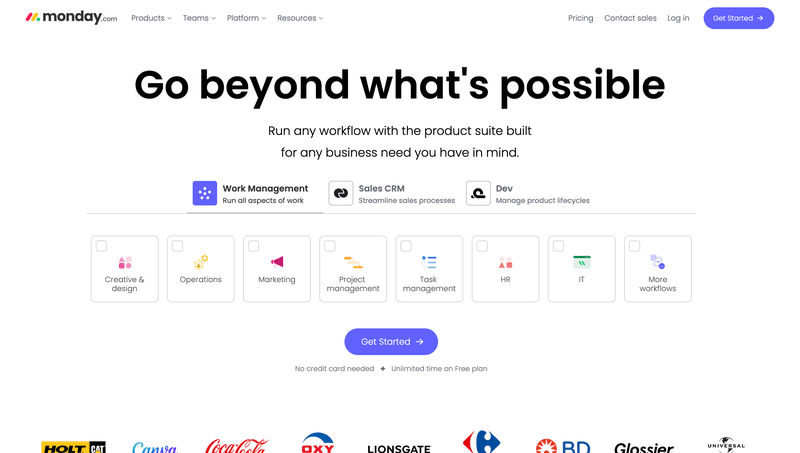
Monday’s multiple use cases.
Coda
Coda is a good example of a competitor-based positioning strategy. They distinguish themselves by highlighting the benefits and competitive advantages they offer over other project management and document collaboration tools such as Google Docs or Airtable.
This approach not only showcases Coda’s unique features but also educates the audience about why they might be a better choice than their more established competitors.
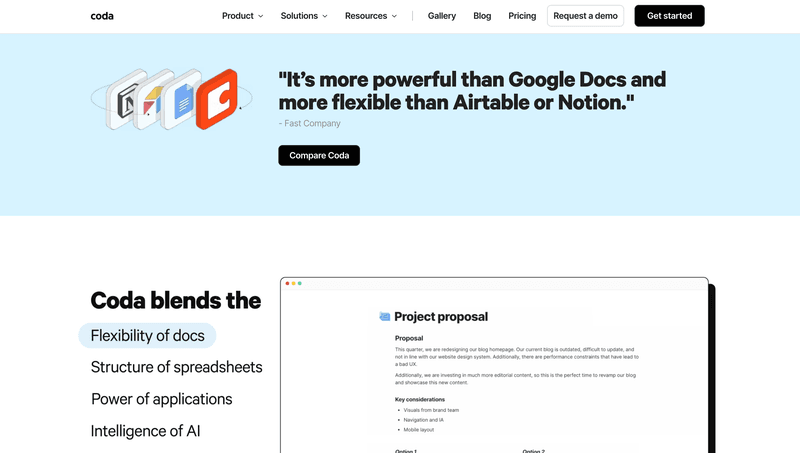
Conclusion
Your SaaS can die or thrive depending on your product positioning strategy.
By identifying your target market, conducting thorough research, defining a unique selling point, and continuously refining your approach, you can give your business a higher chance to stand out in your market.
Want to streamline and automate product management tasks to focus on important positioning strategies? Book a Userpilot demo to see how you can improve your product success.







